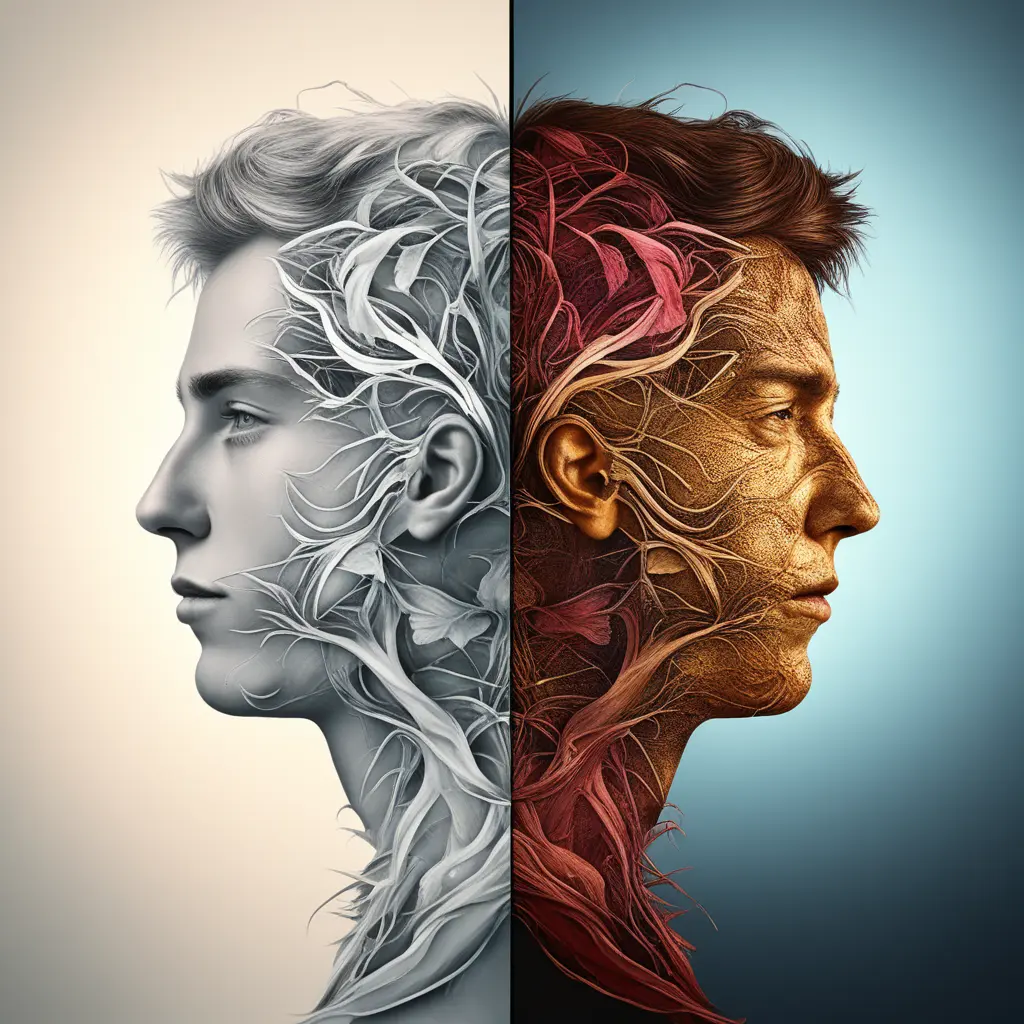Table of Contents
ToggleDiscovering the Real You
Have you ever thought about who you really want to be? Many people have an idea in their mind of an “ideal self” – the perfect version of themselves. But our real self is who we truly are each day.
What if I told you that unlocking your full potential is all about understanding the balance between who you wish to be and who you truly are?
In this article, we’ll explore the differences between “Ideal Self vs Real Self” Explaining dynamic relationship between your desired identity vs your authentic personality, and provide practical examples to help you understand this topic.
What is the Real Self?

This is our self-identity, the person we are every day, without the dreams and expectations. It is the person we are when we are alone, without the influence of others. Our real self is a combination of our strengths, weaknesses, and imperfections.
“To be yourself in a world that is constantly trying to make you something else is the greatest accomplishment. – Ralph Waldo Emerson
What is the Ideal Self?

Have you ever looked at celebrities or other successful people and imagined having their life? This is the person we want to become – the one we imagine, It is the person we want to be, the person we believe will bring us happiness and fulfillment. But is this Ideal Self a true reflection of what makes me who I am?
The only person you should try to be better than is the person you were yesterday.
Ideal Self vs Real Self
Difference
Consider a student who dreams of becoming a successful writer (Ideal Self), but struggles with writing assignments (Real Self). The gap between her real and ideal self might cause frustration. But it can also motivate her to practice more and improve her writing skills.
Here are a few examples how ideal self and real self can be different :
Confidence – Our ideal self is very confident and believes in themselves fully. But our real self may lack confidence at times and doubt themselves.
Appearance – Our ideal self has the perfect body and looks just how we want. However, our real self has to live with how we really look each day.
Talents – Our ideal self is very talented at many things and accomplishes great things. Meanwhile, our real self may struggle more with skills and talents.
Work – In our mind, our ideal self has the perfect career and job that they love. But our real self may have to work a job that is not their dream.
Health – Some imagine their ideal self as always feeling great physically. But health issues can impact our real selves at times.
Life Choices – Our ideal self likely makes all the “right” decisions. Our real self knows they do not always make the best choices.
So in summary, our ideal self reflects who we wish we could be. But our real self faces reality. The good news is we can work to close the gap between these two selves.
The Gap Between Our Ideal Self and Real Self

Psychologists like Carl Rogers emphasize the importance of self-acceptance in this journey.
The ideal self and real self are often in conflict, creating a gap between who we want to be and who we are. This gap can cause feelings of frustration, disappointment, and even shame. However, it’s important to remember that it’s normal to have this gap. It’s part of being human and it’s what drives us to grow and improve.
Closing The Gap
So how can we integrate aspects of our ideal selves into who we are on a daily basis? Here are a few suggestions based on personal experiences:
Start small with manageable goals – Break big dreams down into steps. If acting in movies seems out of reach, begin by joining a local community theater. Seeing progress will boost motivation versus setting yourself up for disappointment.
Focus on skills, not outcomes – Focus on improving talents within your control versus external outcomes like fame or wealth. Take an improv class instead of visualizing standing ovations. Nurturing abilities helps gain self-assurance over time.
Seek inspiration, not comparison – Look to role models for guidance, not to feel badly about ourselves. Admiring others can motivate self-improvement without turning it into a competition.
Accept imperfection – Our realities won’t match fantasies perfectly due to human errors. Forgive mistakes and see them as learning tools, not failures.
With practice balancing expectations with acceptance, the distance between our ideal and real selves can shrink. We may not fully do everything we imagine, but focusing on improving ourselves lets parts of who we want to be become parts of who we are now.
Conclusion
Remember, perfection is an illusion, Your normal self is good enough and deserves to be loved. Accept yourself, problems and all. Focus on being real, not pretend. Do what feels right for you, and you’ll find real happiness and a feeling of having enough.
How do you see the relationship between your ideal and real selves? What steps do you take to bring aspects of your hopes and dreams closer to your everyday life? Share your thoughts below.


